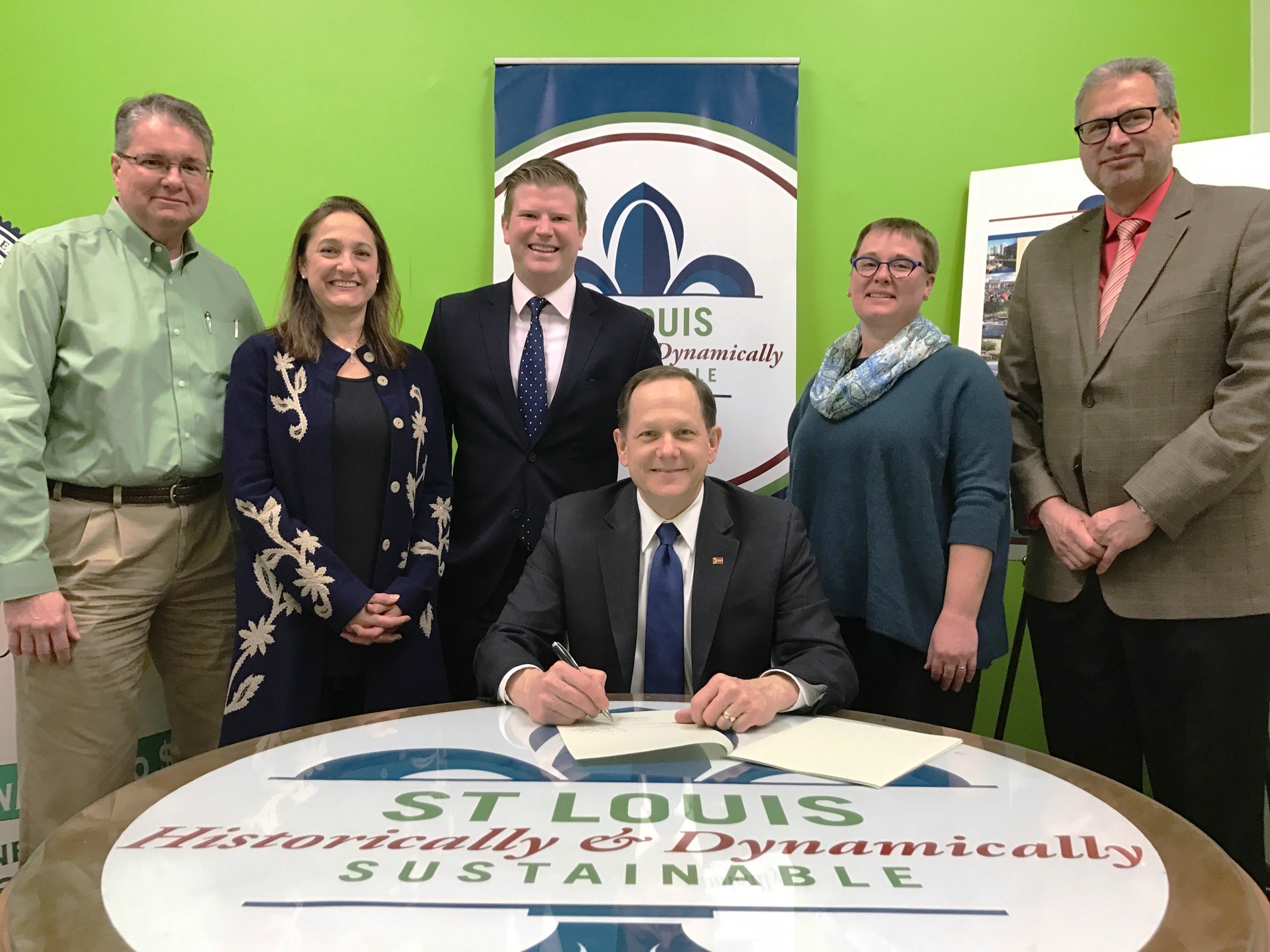As the region continues to move toward improved sustainability, the St. Louis Green Business/Green Cities Challenge supports organizations and municipalities that are doing their part to integrate eco-friendly measures into everyday operational practices. For more than a decade, these esteemed programs have seen the commitment of 233 businesses, nonprofits and municipalities, engaging 155,000+ employees and nearly 470,000 residents to reduce environmental impact and help improve air quality.
In 2019, nine municipalities participated in the Green Cities Challenge, each addressing and incorporating sustainability in various ways unique to their local government. This month, the Clean Air Partnership is delighted to shine a spotlight on the City of Collinsville, Ill. for their continued push for innovation and development.
Collinsville has been buzzing with excitement since they legalized beekeeping within the city last year, making it possible for all residents to maintain bee hives based on the size of the property in effort to help boost pollination of nearby crops. Popular destination Willoughby Farms stepped up to do their share for cleaner air by discontinuing the use of all Styrofoam products on its grounds and enlisted the help of 487 volunteers to participate in farm activities, including the U of I Extension’s Master Gardener’s class, Urban Ecology Club, composting and vermiculture classes, and beekeeping classes.
Additionally, the city has made waves in the form of energy conservation, with new renovations to the Activity Center and Aqua Park that are expected to create annual energy savings between $10,000-$15,000 and yield operations and maintenance savings between $15,000-$20,000.
Other exciting initiatives included two Solar Power Hours at City Hall, which welcomed 40 residents to explore the use of solar panels in their homes. To raise awareness on single-use plastics, the Collinsville Cool Cities Committee distributed a total of 650 reusable tote bags during the Farmer’s Market and other community events. The city also co-hosted an Electronics Recycling Drive with Madison County that was free to all residents, collecting more than 54,000 pounds of electronics that will skip the landfill and result in fewer greenhouse gas emissions released into the atmosphere!
As the city continues to set goals in its focus areas: transportation; buildings, grounds and lighting; environmental management; land use and planning; community development; and engagement and education, Collinsville hopes to promote and create accessible walking and bike paths to popular community destinations such as schools, libraries and grocery stores as part of their 2020 Sustainability Plan. They also vow to continue adding more hybrid and electric car-charging stations and invest in other viable options for sustainable transportation.
Registration for the 2020 St. Louis Green Business/Green Cities Challenge is now open. For additional information on the sustainable efforts underway by the City of Collinsville and how your municipality can get involved in the Challenge, subscribe to the bi-monthly E-Newsletter or visit www.stlouisgreenchallenge.com.
To learn more about the link between sustainability and air quality, explore our website, like us on Facebook or follow us on Twitter at @gatewaycleanair.











